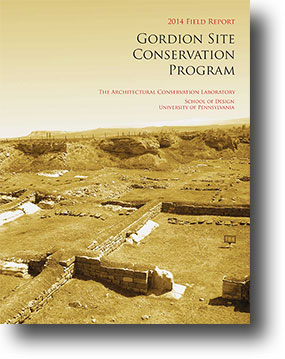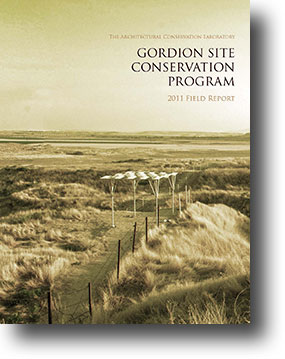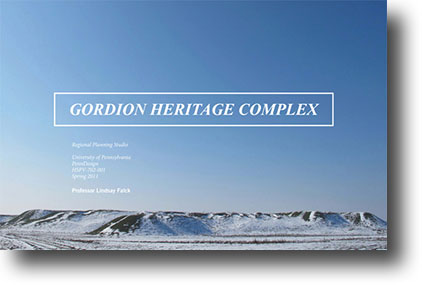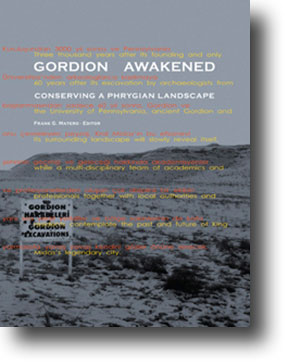 |
ACL Project List |
 |
|
|||||||||||||||||||||
| Gordion Site Conservation Program 2014 Field Report The primary focus of architectural conservation work during the 2014 field season was the Terrace Building Complex, the Early Phrygian Gate, the visitor circuit, and the pebble mosaic on display at the Gordion Museum. Site Conservation has always been a high priority at Gordion, and it will continue to be one of the most important activities during the coming field seasons. A renewed Conservation and Management Plan for the Gordion Citadel began in 2007, continuing the first five-year plan under the supervision of Prof. Frank Matero and the Architectural Conservation Laboratory of Penn's School of Design (ACL). The current plan continues an integrated and phased program of academic research, site conservation, and training. |  | |
Gordion Site Conservation Program 2011 Field Report As the Architectural Conservation Laboratory enters into its sixth year at Gordion’s citadel, it has developed model strategies to address structural instability and material degradation of the site’s major features. These methods of intervention have been implemented in 2011 at the monumental Early Phrygian Gate, the Terrace Building Complex, and the Megaron 2 mosaic pavement and are presented here in the Gordion Site Conservation Program 2011 Field Report. The experimentation and evaluation conducted during the program’s initial years have confirmed the success of new and traditional conservation methods at the site. These interventions continue to both clarify and define Gordion’s existing archaeological record while at the same time minimizing deterioration of the extant architecture.
To purchase a printed copy of the 2011 Field Report, please visit our Lulu page. |
 |
|
Gordion Heritage Complex 2011 Studio Report Gordion is a broad and deeply layered landscape with the latent potential to express its ancient and modern cross-sections as a world heritage site. Today it is challenged by increasing disinvestment and deterioration of its historic resources and piecemeal intervention strategies that lack large-scale vision. The proposals presented through the 2011 Gordion Heritage Complex studio, held at the University of Pennsylvania under the direction of Professor Lindsay Falck, choreograph experiences which engage archaeologists, heritage specialists, visitors, and village residents to interact with one another in mutual interest, ownership, and stewardship. |  | |
Gordion Awakened represents the collective efforts of the Architectural Conservation Laboratory of the University of Pennsylvania's School of Design and the Penn Museum of Archaeology and Anthropology, and is intended to explore the benefits of interdisciplinary collaborative inquiry into the structures, context, conservation, and interpretation of Gordion and its environs during the first four years of renewed site conservation activity. The papers presented illustrate the diverse research that has been required to document, analyze, and conserve Gordion. This research addresses the practical problems the site now faces in its second half century of exposure. More generally, the work addresses philosophical and technical issues confronting all archaeological sites worldwide. It is hoped that this publication will offer those responsible for the conservation and management of archaeological sites a model of approach and examples of best practices. To purchase a copy of Gordion Awakened, please visit our Lulu page |  | |
|
